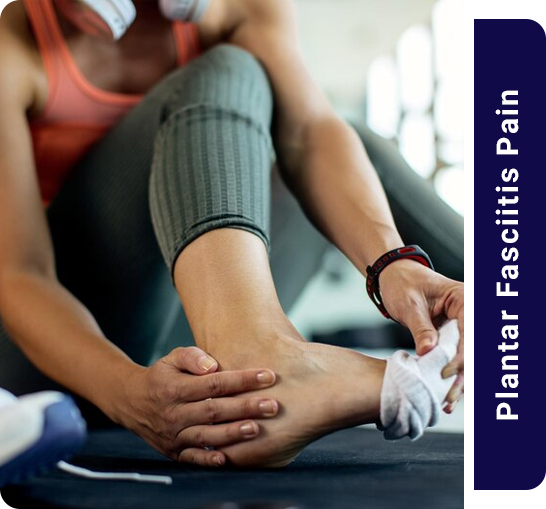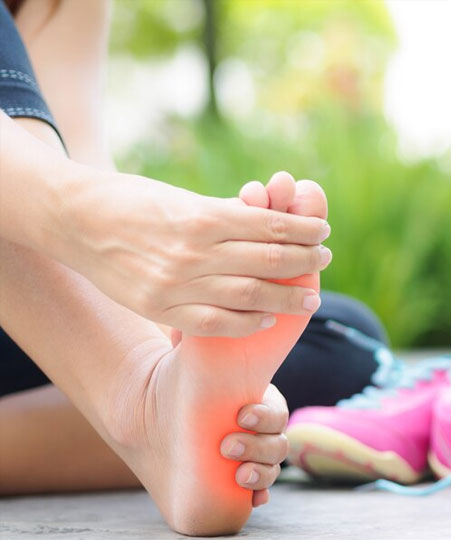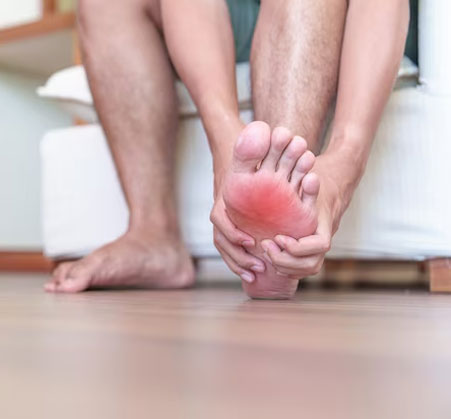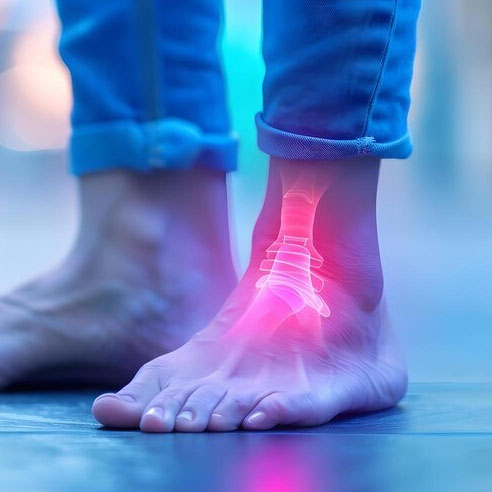Foot Biomechanics
Improper foot biomechanics, including flat feet or high arches, strain the plantar fascia significantly and lead to persistent pain.
Plantar fasciitis is a common condition causing sharp pain or stiffness in the heel and arch. It often results from overuse, poor biomechanics, or inappropriate footwear. This tough, connective tissue supports the foot’s arch and absorbs shock during movement. Strain from long-standing periods, high-impact activities, or sudden changes in exercise routines can lead to inflammation and discomfort. The pain is often most intense during the first steps in the morning or after prolonged sitting. Proper treatment focuses on reducing inflammation, correcting biomechanical flaws, and improving foot function. Osteopathic care provides targeted relief, addressing the root causes to restore mobility, alleviate discomfort, and prevent future episodes effectively.

Improper foot biomechanics, including flat feet or high arches, strain the plantar fascia significantly and lead to persistent pain.
Repetitive activities like running, jumping, or prolonged standing create excessive stress on the plantar fascia, causing inflammation.
Wearing unsupportive or improper footwear, such as high heels or flat shoes, worsens foot alignment and increases tension.
Rapid increases in activity levels, weight gain, or standing hours overload the plantar fascia, triggering discomfort and irritation.

Osteopathic manipulation relieves tension, improves circulation, and promotes healing by restoring optimal biomechanical function.
Custom orthotic devices reduce strain, enhance foot alignment, and alleviate pressure on the plantar fascia.
Incorporating stretching exercises & avoiding high-impact activities helps prevent pain & supports long-term recovery.

Preventing plantar fasciitis recurrence involves proper foot care, regular stretching, and wearing supportive footwear. Focus on maintaining strong and flexible calf muscles to reduce strain on the plantar fascia. Avoid high-impact activities or prolonged standing without proper support, as these can trigger inflammation. Incorporate orthotics or custom insoles to ensure proper alignment and cushioning for your feet. Additionally, maintaining a healthy weight reduces unnecessary pressure on your arches and heels. Regularly assess your footwear to ensure they provide adequate arch and heel support. By taking these proactive measures, you can protect your feet from future issues and keep moving pain-free.
Biomechanical flaws like flat feet, high arches, or overpronation can contribute significantly to plantar fasciitis. These issues place abnormal stress on the plantar fascia, leading to pain and inflammation over time. Poor gait mechanics, such as improper foot alignment during walking or running, exacerbate the problem. Tight calf muscles, weak foot arches, or imbalances in the hip and knee can further strain the fascia. Identifying and addressing these flaws through proper assessment, stretching, strengthening exercises, and supportive footwear can alleviate current discomfort and prevent future episodes. Osteopathic care offers a comprehensive approach to correcting these mechanical issues for long-term relief.

Discover lasting relief with tailored treatments and advanced techniques designed to effectively manage and heal plantar fasciitis.
Osteopaths evaluate your entire musculoskeletal system to identify underlying issues causing plantar fasciitis discomfort.
Gentle adjustments relieve tension, restore alignment, and improve function in affected foot and leg structures.
Focused therapy reduces inflammation, enhances blood flow, and promotes healing of strained plantar fascia tissue.
Improving foot mechanics addresses imbalances, preventing stress and supporting long-term plantar fasciitis recovery.
Plantar fasciitis is an inflammation of the tissue connecting your heel to your toes, causing pain.
Common causes include improper footwear, overuse, poor foot biomechanics, or standing for prolonged periods.
Treatment includes osteopathic therapy, stretching exercises, footwear changes, and addressing underlying biomechanical issues.
Prevention involves wearing supportive footwear, maintaining proper foot mechanics, and avoiding overloading your feet with stress.
© All Rights Reserved by Kriston Healthcare